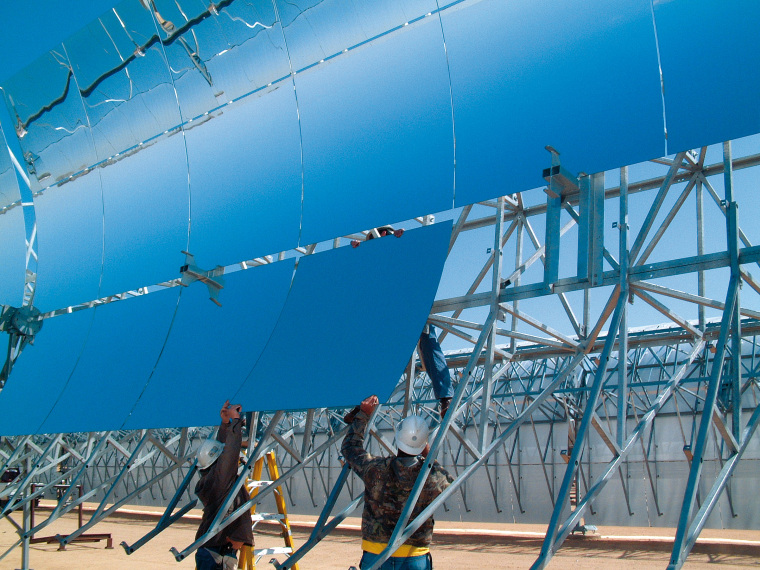Calling it a major milestone, the Obama administration on Monday approved what investors say will be the world's largest concentrated solar power plant and one that more than doubles all of U.S. solar output and can power at least 300,000 homes.
The project in the Mojave Desert near Blythe, Calif., is the sixth solar venture authorized on federal lands within the last month. All are in desert areas.
"The Blythe Solar Power Project is a major milestone in our nation’s renewable energy economy and shows that the United States intends to compete and lead in the technologies of the future," Interior Secretary Ken Salazar said in announcing the approval.
Construction on the $6 billion plant is expected to start by the end of 2010, with production starting in 2013. Developer Solar Millennium, a company based in Germany, says the plant will generate 1,066 construction jobs and 295 permanent jobs.
The project had run into opposition by some environmentalists due to wildlife concerns.
The Interior Department stated that Solar Millennium will be required to "provide funding for more than 8,000 acres of desert tortoise, western burrowing owl, bighorn sheep and Mojave fringe-toed lizard habitat to mitigate the project’s impacts."
The plant will use "parabolic trough" system whereby parabolic mirrors focus the sun's energy onto collector tubes. Fluid in the tubes is then heated and sent to a boiler, which sends live steam to a turbine to produce electricity.
Solar plants that begin construction before Dec. 31 qualify for a Treasury Department grant totaling 30 percent of a project's cost, as part of last year's economic stimulus package.
Approval of a seventh project on federal lands — also in California — is expected in the next few weeks. All could start transmitting electricity by the end of 2011 or early 2012.
At full capacity, the seven projects would generate more than 3,000 megawatts of power and provide electricity for up to 2 million homes. The projects are expected to create more than 2,000 jobs during construction and several hundred permanent jobs.
A spokeswoman for the solar industry said the flurry of announcements shows that efforts made by the Obama administration and California Gov. Arnold Schwarzenegger to promote solar power are beginning to pay off.
"We're finally going to see solar energy produced on public lands in the United States — and this is something the public wants," said Monique Hanis, a spokeswoman for the Solar Energy Industries Association, a Washington-based trade group.
The announcements come about five years after solar developers began asking the Bureau of Land Management for rights to develop hundreds of solar plants on millions of acres of federally owned desert in the Southwest.
The bureau opened federally owned lands in 2005 to solar development, but an examination of records and interviews of officials by The Associated Press showed the program operated a first-come, first-served leasing system that quickly overwhelmed its small staff and enabled companies, regardless of solar industry experience, to squat on land without any real plans to develop it.
To expedite environmental review and bureaucratic red tape, the Interior Department identified 14 of the most promising solar projects among the more than 180 current permit applications covering about 23 million acres of federally owned desert in the Southwest.
Those 14 "fast-track" projects alone would produce more than 6,000 megawatts, enough to power 4 million homes for a day at peak usage, officials said.
Hanis, the industry representative, said that even after the 14 fast-track projects are approved, solar energy will remain a tiny fraction of overall energy production on U.S. lands. The projects approved this month are the first ever approved by land management bureau, compared with more than 74,000 oil and gas permits issued in the past two decades.
